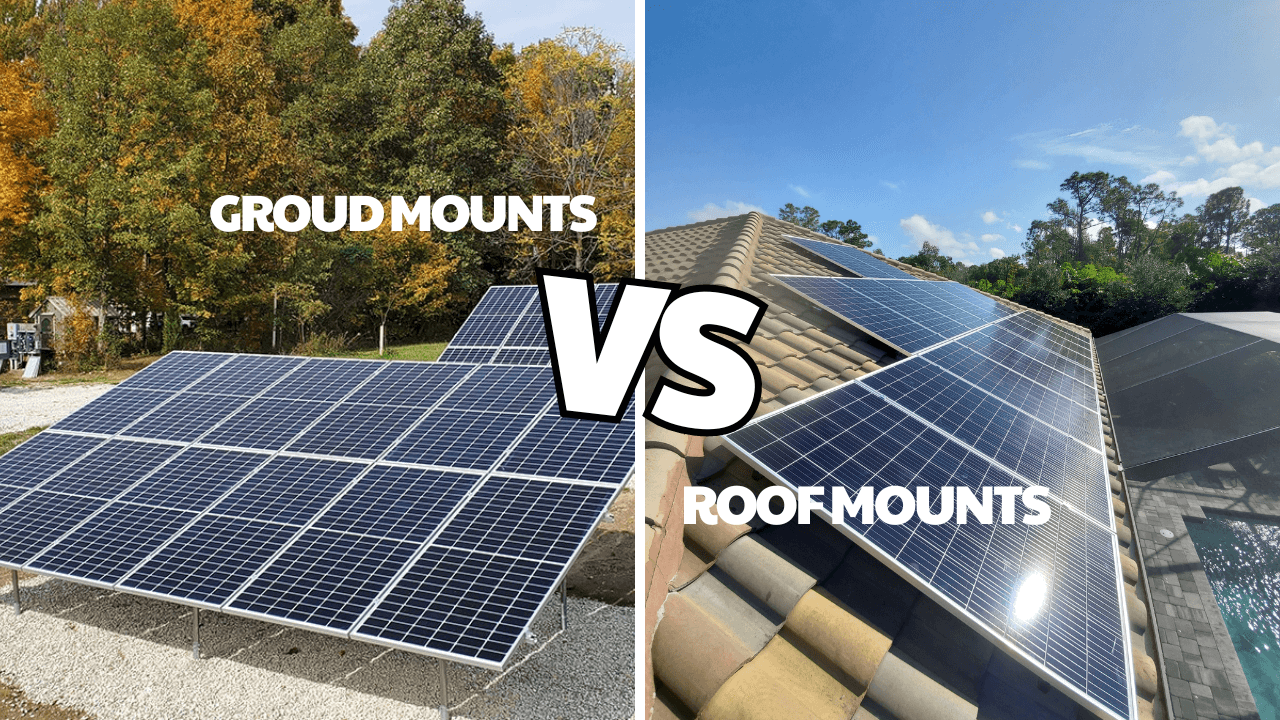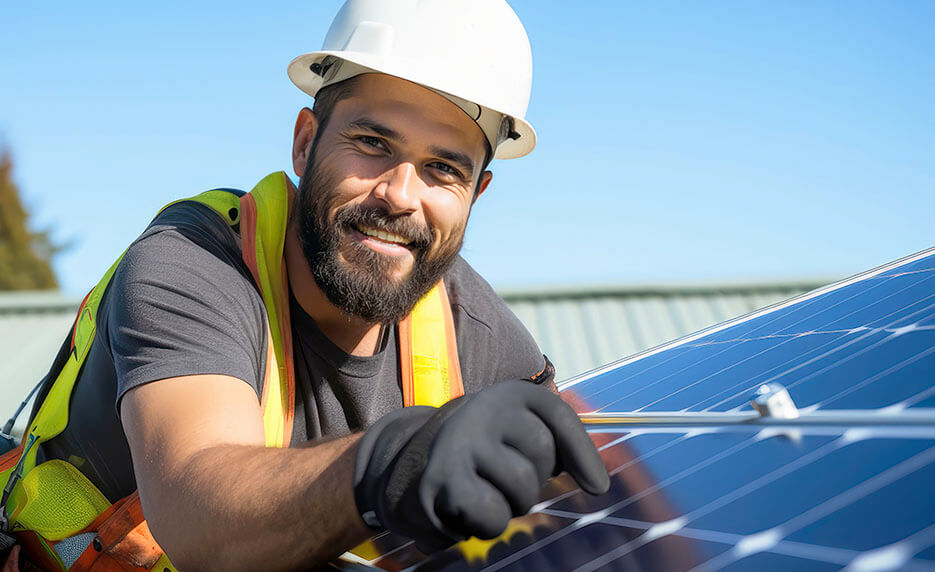Solar Battery Compatibility: The Key to a Seamless Off-Grid Setup
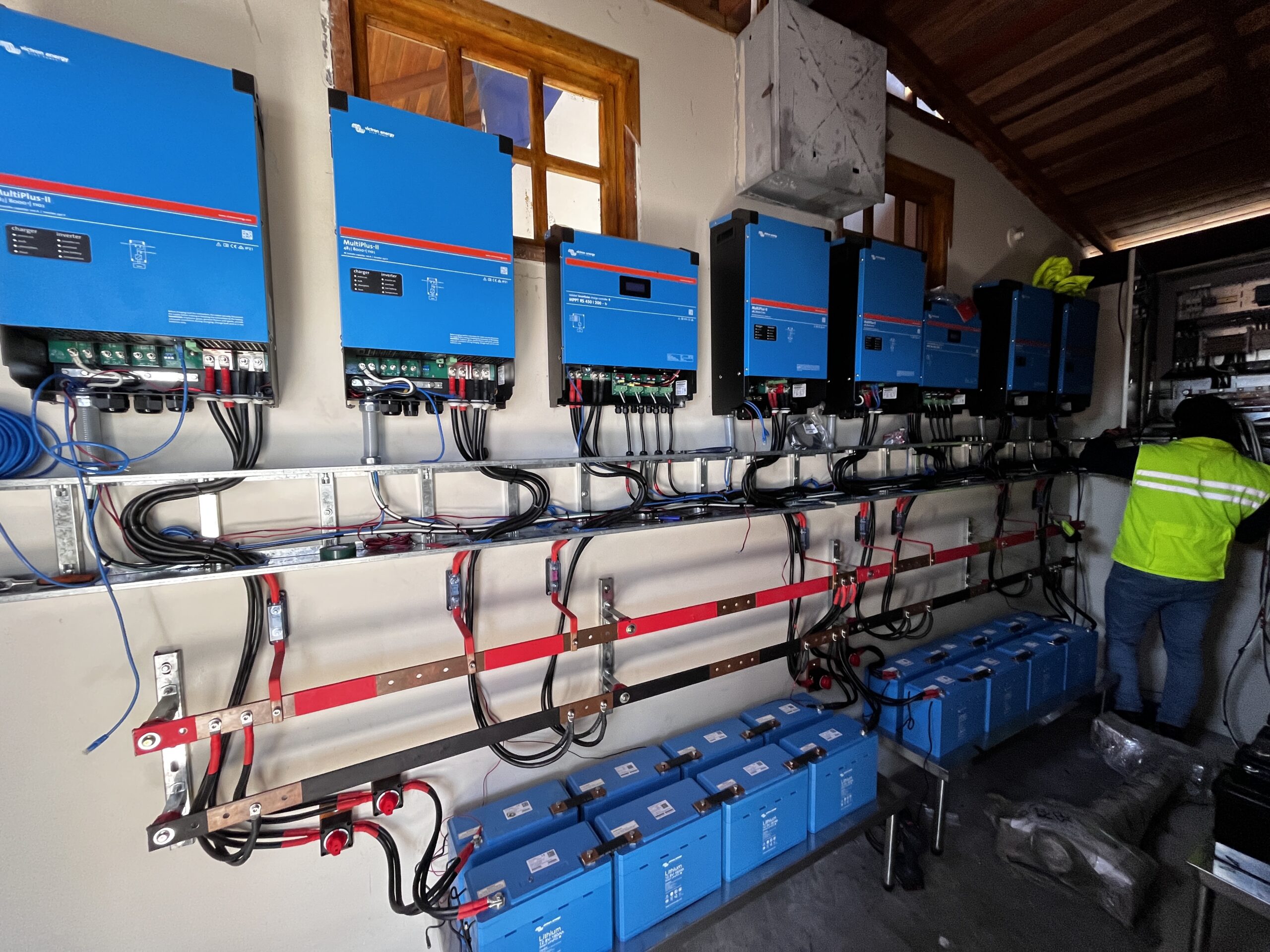
Are you dreaming of using solar power to live off the grid, but feeling unsure about picking the right batteries? Choosing batteries that don’t work well with your solar setup can cause a bunch of issues.
Mismatched batteries can lead to your system not running as smoothly or efficiently as it should. They might even stop working sooner than expected. You could end up constantly trying to fix problems or, even worse, be left without power when your batteries can’t keep up with what you need. Picking the wrong batteries can quickly turn your off-grid dream into a pricey nightmare.
But don’t let worries about batteries stop you from gaining energy independence! The secret to a smooth off-grid solar experience is understanding how to match batteries to your system. By carefully figuring out how much energy you need, looking at different battery choices, and finding the perfect fit with your solar parts, you can create a reliable and efficient off-grid power setup.
In this blog post, we’ll explore the world of off-grid solar batteries and give you the info you need to make smart decisions. From learning about battery types and specs to getting the most out of your system, we’ve got you covered. Get ready to discover the secrets of matching batteries and set yourself up for a successful off-grid solar journey!
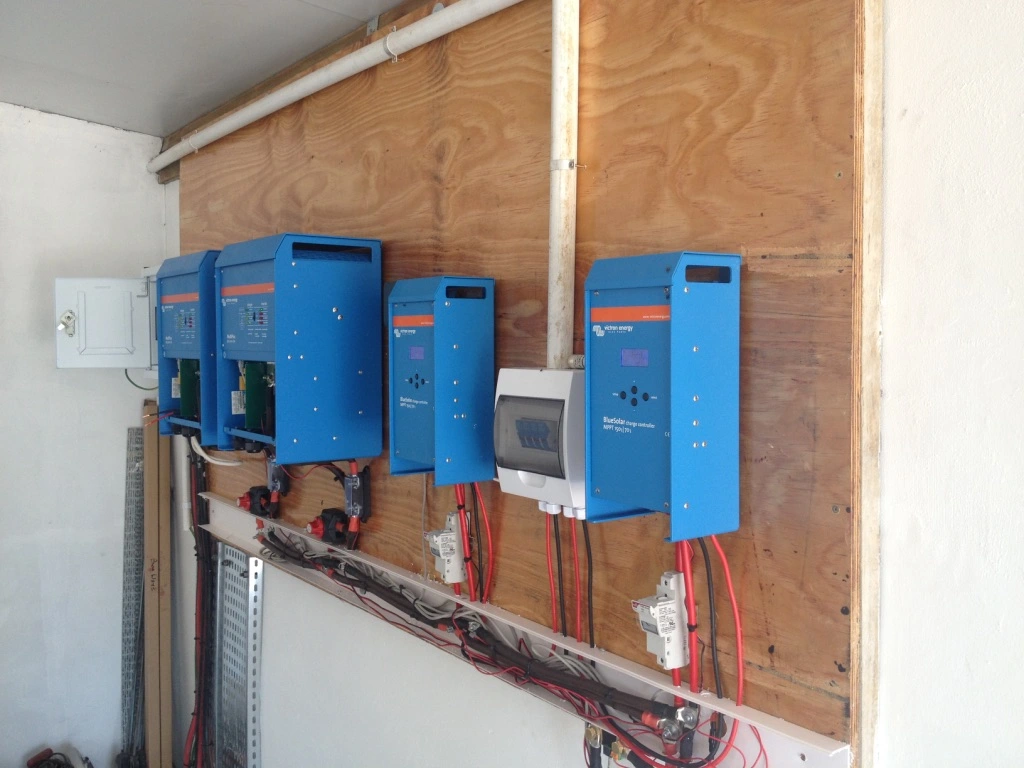
Figuring Out How Much Energy You Need
To make a good off-grid solar system, you first need to know how much energy you use each day. If you don’t do this right, your system might be too small and not give you enough power. Or it could be too big and cost more than it needs to.
Steps to Figure Out Your Daily Energy Use
- Make a list of all the things that use electricity that you want to power with your off-grid solar setup. Write down how many watts each one uses and guess how many hours a day you’ll use it.
- For each item, multiply the watts by the hours you’ll use it each day. This gives you the watt-hours (Wh) that item will use daily.
- For example, a 60W light bulb used 5 hours a day uses:
- 60W × 5 hours = 300Wh
- Add up the daily watt-hours for all your electrical items. This is your total energy needed each day.
- It’s smart to add about 20% extra to this number in case you use more than you think or your system wastes some energy.
Discover the truth behind solar panel efficiency and learn how to make informed decisions for your solar installation. Read more to debunk the myths and get the facts.
Figuring Out Your Battery Size
- Think about how many days you want your batteries to power your stuff without needing the sun to recharge them. This is called “days of autonomy.”
- Multiply your daily energy need by the days of autonomy you want. This tells you the total battery size you need in watt-hours (Wh) or kilowatt-hours (kWh).
- For example, if you use 2kWh a day and want 3 days of autonomy, you need batteries that can hold:
- 2kWh × 3 days = 6kWh
Helpful Tools
- Energy use calculators online where you put in what items you have and how much you use them.
- Meters that measure how much power your stuff actually uses over time.
- Worksheets that help you list out your electrical items, guess how much they use, and figure out the size of batteries and solar panels you need.
By using these tools and really thinking about your energy needs, you’ll be able to make an off-grid solar system that gives you just the right amount of power. Spending time planning well in the beginning will pay off with a system that works better, costs less, and is more dependable in the long run.
Don’t let misconceptions hold you back from enjoying the benefits of the Tesla Powerwall. Click here to uncover the truth and see if this innovative home battery is right for you.
Understanding Battery Types for Off-Grid Solar
When it comes to choosing batteries for your off-grid solar system, there are several types to consider.
The most common battery types used in off-grid setups are lead-acid batteries, which come in two main varieties: flooded and sealed (AGM and gel).
Lead-Acid Batteries:
- Flooded Lead-Acid (FLA): These batteries are the most cost-effective option and have a long lifespan when properly maintained. However, they require regular maintenance, such as checking electrolyte levels and topping up with distilled water. FLA batteries also need proper ventilation as they can emit gases during charging.
- Sealed Lead-Acid (SLA): SLA batteries, including Absorbed Glass Mat (AGM) and Gel, are maintenance-free and have a lower risk of spills or leaks. They are more expensive than FLA batteries but offer better performance and longer life. AGM batteries are known for their fast charging capabilities and resistance to low temperatures, while Gel batteries excel in deep discharge applications.
Lithium-Ion Batteries (LiFePO4):
Lithium iron phosphate (LiFePO4) batteries are becoming increasingly popular for off-grid solar systems.
They are lightweight, have a long lifespan, and offer high energy density. LiFePO4 batteries can be discharged deeper than lead-acid batteries and have faster charging rates. However, they come at a higher upfront cost.
Pros and Cons:
- Flooded Lead-Acid: Pros – cost-effective, long lifespan when maintained. Cons – require regular maintenance and proper ventilation.
- Sealed Lead-Acid (AGM and Gel): Pros – maintenance-free, leak-proof, better performance. Cons – more expensive than FLA.
- Lithium-Ion (LiFePO4): Pros – lightweight, long lifespan, high energy density, deep discharge capability. Cons – higher upfront cost.
Wondering if the Tesla Powerwall is the perfect addition to your solar energy system? Read our in-depth analysis to determine if this cutting-edge home battery aligns with your energy needs and goals.
Battery Compatibility with Off-Grid Solar
When selecting a battery type for your off-grid solar system, consider factors such as cost, maintenance requirements, performance, and longevity. Flooded lead-acid batteries are a cost-effective choice for those willing to perform regular maintenance, while sealed lead-acid batteries offer a maintenance-free option at a slightly higher price point. Lithium-ion batteries, particularly LiFePO4, are becoming a popular choice for their superior performance and long lifespan, despite the higher initial investment.
| Criteria | Lead-Acid (Flooded) | Lead-Acid (Sealed/AGM/Gel) | Lithium-Ion (LiFePO4) |
|---|---|---|---|
| Energy Density | Low | Low to Moderate | High |
| Cycle Life (@50% DoD) | 300-500 cycles | 500-1000 cycles | 2000-5000+ cycles |
| Depth of Discharge (DoD) | 50% recommended | 50-80% | 80-100% |
| Maintenance | High (watering, cleaning) | Low to None | None |
| Charging Efficiency | Moderate (70-85%) | Moderate (70-85%) | High (95%+) |
| Self-Discharge Rate | High (3-20%/month) | Low (1-3%/month) | Very Low (<1%/month) |
| Upfront Cost | Low | Moderate | High |
| Lifetime Cost | Moderate to High | Moderate | Low |
| Weight & Size | Heavy & Bulky | Heavy & Bulky | Lightweight & Compact |
| Temperature Sensitivity | High | Moderate | Low |
| Safety Concerns | Gassing, Spillage | Minimal | Minimal (with BMS) |
Ultimately, the best battery type for your off-grid solar setup will depend on your specific needs, budget, and preferences. Consider consulting with a professional to determine the most compatible battery type for your unique off-grid solar system.
Don’t wait until an outage to find out if your solar battery backup system is reliable. Ask these four crucial questions to ensure your system is ready to keep your lights on when you need it most.
Factors Affecting Battery Compatibility
When designing an off-grid solar system, it’s crucial to consider battery compatibility to ensure optimal performance, efficiency, and longevity. Several key factors influence how well a battery integrates with your solar components.
Battery Voltage (12V, 24V, 48V)
The battery voltage you choose (12V, 24V, or 48V) should align with your system’s requirements. Higher voltages are generally more efficient and require thinner cables, but they may also be more expensive and have limited compatibility with some appliances. 12V systems are the most common for small off-grid setups, while 24V and 48V are often used for larger installations.
Charging Profiles and Requirements
Different battery types have specific charging requirements. For example, lead-acid batteries need to be fully recharged after each discharge cycle, while lithium-ion batteries can handle partial charging. Matching the charging profile of your solar charge controller to your battery type is essential for optimal charging and battery health.
Inverter Compatibility
Your battery voltage must match the input voltage of your inverter. Mismatched voltages can lead to inefficient operation or even damage to your components. When selecting an inverter, ensure it’s designed to work with your chosen battery voltage and type.

Environmental Considerations
Temperature and humidity can significantly impact battery performance and lifespan. Extreme temperatures can reduce battery capacity and accelerate aging. Ensure your batteries are installed in a temperature-controlled environment and consider using insulation or ventilation to maintain optimal conditions.
Maintenance and Longevity
Regular maintenance is crucial for extending the life of your batteries. This includes keeping the batteries clean, checking for corrosion, and ensuring proper electrolyte levels (for flooded lead-acid batteries). Proper maintenance, along with staying within the recommended depth of discharge (DoD), can significantly prolong battery life.
Unlock the full potential of your solar energy system by understanding how battery performance affects your savings. Discover the surprising ways you can optimize your solar battery and maximize your energy savings today.
Matching Batteries to Your Solar Panels and Inverter
Picking batteries that work well with your solar panels and inverter is very important. This will help your system run smoothly, efficiently, and for a long time. Here are some key things to think about when matching batteries to your solar setup:
How to choose batteries that fit your solar array size:
- Figure out how much energy you use each day. Then decide how much battery space you need based on what your solar panels make and how long you want backup power.
- Pick a battery that can hold enough energy from your solar panels. Think about things like how much you can use before recharging (depth of discharge) and how well it stores and releases energy (round-trip efficiency).
- Make sure the battery can charge and release energy at rates that match your solar panels and inverter.
Why battery voltage must match inverter input:
- The battery voltage needs to fit what your inverter expects. If they don’t match, your system won’t work as well or parts could get damaged.
- Most off-grid inverters are made for certain battery voltages, like 12V, 24V, or 48V systems.
- If the battery and inverter voltages don’t match, your system might not perform as well, waste energy, or even be unsafe.
Planning for future battery growth:
- Think ahead about your energy needs. Choose batteries that let you add more later.
- Consider things like space, budget, and making sure new batteries work with what you already have.
- To increase battery space, use a parallel setup. This adds capacity but keeps voltage the same so it still matches your inverter.
Getting help from a professional:
- Talk to a qualified solar installer or energy expert. They can look at your specific needs and design a battery system that works well with everything.
- Professionals know how to size and set up batteries based on your solar panels, inverter, and how you use energy.
- Proper installation and testing by experienced professionals will make sure your system performs at its best, is safe, and dependable.
By thinking carefully about these things and working with people who know their stuff, you can choose batteries that connect seamlessly with your solar panels and inverter. A well-matched battery system will make the most of your energy storage, help your whole setup run better, and give you reliable backup power for your off-grid lifestyle.
Get all your questions answered about the Tesla Powerwall in our comprehensive 2024 Homeowners Guide. Learn if this state-of-the-art solar battery and backup system is the right investment for your home and energy needs.
Taking Care of Your Off-Grid Solar Batteries
If you want your off-grid solar batteries to work well and last a long time, it’s important to take good care of them. By following these tips and paying attention, you can help your batteries last longer and avoid having to buy new ones too soon.
How to Take Care of Your Batteries
- Check your batteries often for any damage, rust, or leaks. Clean the battery ends with baking soda and water to stop rust.
- For flooded batteries, check the water levels every month and add distilled water when needed. Keep the water just above the battery plates.
- Make sure the battery area has good airflow and isn’t too hot or too cold. The best temperature is around 77°F (25°C).
- Use a battery balancer every few months to keep the voltage the same in all cells and stop sulfation.
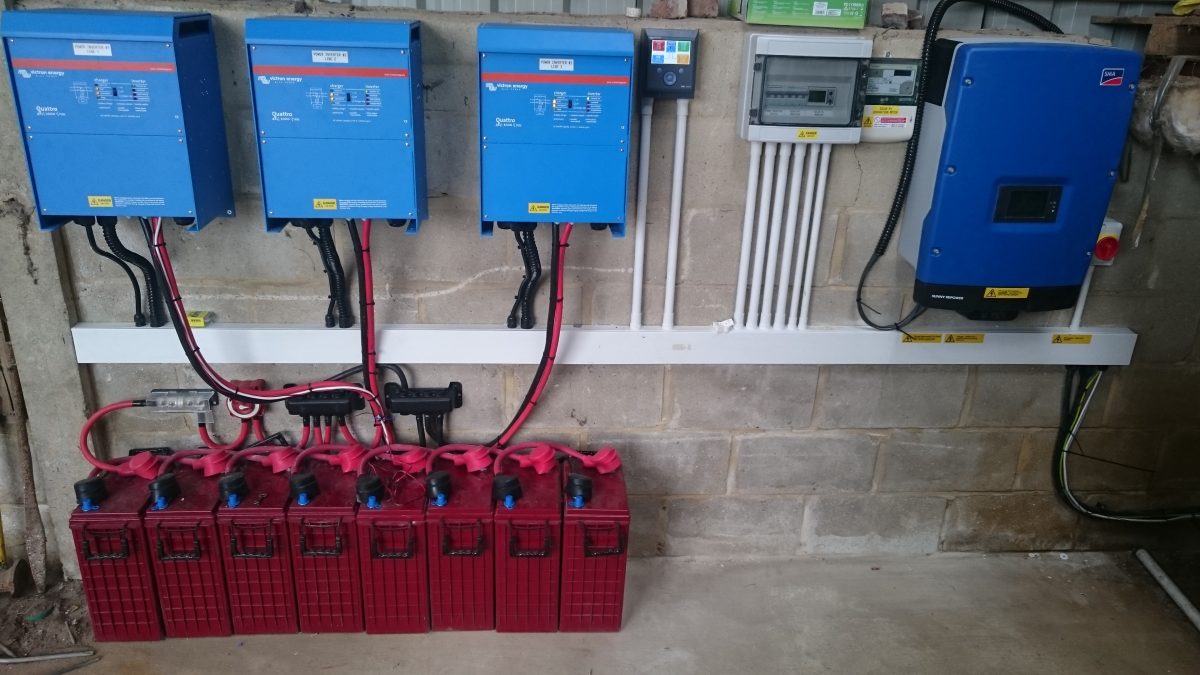
Charging and Using Your Batteries the Right Way
- Don’t overcharge or let your batteries get too low. Use a good charge controller to prevent overcharging.
- For lead-acid batteries, try not to use more than 50% of the battery’s power before recharging. Lithium-ion batteries can handle up to 80%.
- Use a low-voltage disconnect (LVD) to protect your batteries from getting too low, which can hurt them.
- When you can, charge your batteries slowly (at C/10 or less) to make them last longer.
Keeping an Eye on Your Batteries
- Use a battery monitoring system to keep track of important things like voltage, current, state of charge, and temperature.
- Check the data from your monitoring system often to spot any problems early. Fix issues right away.
- Think about using apps or tools to watch your batteries even when you’re not home.
Staying Safe
- Always wear gloves and eye protection when working with batteries.
- Keep sparks, flames, and smoking away from batteries because they can make dangerous gases.
- Make sure you can get to your batteries for maintenance, but keep them away from kids and pets.
- Get rid of old or damaged batteries the right way. Never throw them in the regular trash.
By following these tips for taking care of your off-grid solar batteries, you can help them work better and last longer. Taking good care of your batteries will give you a reliable source of power for many years.
Recap
Understanding solar battery compatibility is key to designing an efficient and reliable off-grid solar system. By assessing your energy needs, selecting the right battery type, and following best maintenance practices, you can ensure your batteries seamlessly integrate with your solar components.
Investing time in proper planning and care will result in a long-lasting, sustainable power solution. Ready to go off-grid? Get started today with a free solar quote from our experts!
Nate is a solar expert with years of hands-on experience. He knows solar tech and sustainable energy inside out. His advice has helped many homeowners and businesses go green. Nate is passionate about eco-friendly living. That's why he's a big voice in the solar community.
Subscribe to newsletter
Stay on top of the latest guides and tips on solar.


